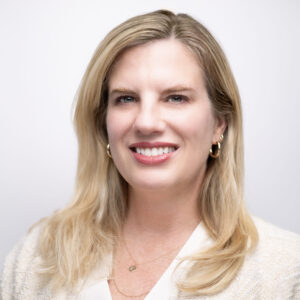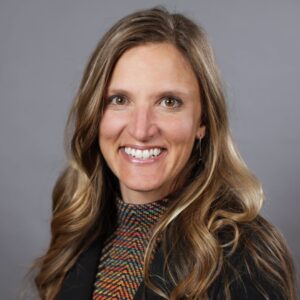Feeding the Faithful
Chef Scott Rouse (right) and Rabbi Binyomin Yudin at Cedar Village, Mason, Ohio. Photo courtesy of Angie Tapogna. |
When George Carlberg, executive chef at Colorado’s Littleton Adventist Hospital had a kosher-observant patient who couldn’t eat the marshmallows being served to other patients-they contained animal-derived gelatin-the diligent Carlberg raced over to a local Whole Foods Market and found a vegetarian substitute. “I bought every package on the shelf,” he recalls. “There were probably about a half dozen.”
Here’s how Carlberg sees his mission: “For many patients, mealtime is the happiest time of the day. For some, it is the only bright spot. We should do everything we can to make it as good as possible.”
Today, this requires foodservice directors, dietitians, and chefs to not only present their constituents with nutritious and appealing meals, but food that complies with myriad medical orders, fits ethnic profiles matching the patient/resident populations, and, at hundreds of long-term care (LTC) communities across the nation, conforms to prescribed religious rules and traditions.
Faith-based diets are increasingly in demand as a U.S. population teeming with diversity races toward old age and senior living communities. This year, the first wave of Baby Boomers reaches 65 years of age. And there is a flood of future LTC residents building up behind them. Administrators and their foodservice managers need to start learning now about the dozens of diet variations and adjustments residents will expect. How well the professionals learn and adapt may be critical to how well their facilities continue to attract residents. It is still true that one of the first questions a prospective resident asks is, “How is the food?”
KEEPING IT KOSHER
| Chef Jean Duroseau with residents at Jewish Home Assisted Living, River Vale, New Jersey. Photo courtesy of Jewish Home Assisted Living. |
Chef Susan Surchev, director of foodservice, serves desserts at the Tulsa Jewish Retirement & Health Center. EVAN TAYLOR PHOTOGRAPHY |
Closeup of temping desserts at the Tulsa Jewish Retirement & Health Center. EVAN TAYLOR PHOTOGRAPHY |
Of the many religious/cultural dietary regimens found in LTC communities, kosher is currently the most common. And, surprisingly, its reach is wider than some might suppose. Menachem Lubinsky, a Brooklyn-based marketing consultant with close ties to the kosher food sector, says, “Kosher has a broad appeal not only to people who observe the Jewish dietary laws, but members of other religious groups, as well as ordinary consumers who believe kosher is better and healthier.”
According to Lubinsky, nearly 40% of the $12-billion kosher food market comes from foodservice. Nor is the product lineup limited to the clichés of gefilte fish and knishes, but now boasts many upscale specialty foods ranging from spelt-free to sushi. It is increasingly common to find natural and organic options, and more suppliers are tuning in to health needs, offering low-fat, low-sugar, and no- and low-sodium selections.
The broadening of choices is good news for foodservice directors like Michael Grabner, who, as a regional director of operations for Morrison Senior Living, oversees 10 senior living/rehab facilities in Ohio and Kentucky. Grabner says, “Our goal is to balance the observance of the Jewish dietary laws or kashrut with a culinary creativity that the new generation of residents demands. In our menus, we strive to incorporate a variety of foods from different cultures (e.g., Asian, Southwestern, etc.), while staying within kosher guidelines.”
Cedar Village, which houses a 162-bed health center and 105 assisted living apartments in Mason, Ohio, is one of Morrison’s kosher clients. Grabner says, “We work with the dining services team daily to strengthen their understanding of both the cultural and religious aspects of what we do along with the dietary standards and regulatory expectations.” Staff sample all the foods-even those modified for easy digestion-such as soft foods and purees. Grabner explains that in this way they are familiarized with flavor profiles and textures and can do a better job of satisfying the patients’ expectations.
IN THE BIBLE BELT
Rabbinical supervision is a key element in the manufacture, preparation, and service of kosher meals. At Oklahoma’s Tulsa Jewish Retirement & Health Care Center, says Rick Ousley, kitchen supervisor, all packaged products must have a hechsher, a seal or symbol identifying the overseeing authority. In addition, he says, suppliers are required to “provide us with the name of the supervising rabbi, which we keep on file, in case anyone asks.”
Heather Lewin, the center’s director of marketing and public relations, notes that Ousley’s kitchen is not limited to serving the 200 residents of the gated retirement community, but also is a resource for Tulsa’s larger Jewish community, about 2,000 strong. She explains, “We’re in the Bible Belt, and there aren’t any kosher restaurants, so we are often called upon to provide kosher meals, challah from our bakery for families observing Shabbat [the Hebrew Sabbath], lunches for the Jewish day school, catering for bar/bat mitzvah celebrations, and even delivering meals to hotels for visitors to Tulsa who keep kosher.”
Ousley indicates that thanks to modern shipping capabilities, the task is not as daunting as it sounds. “We special-order many items,” he says. Principal suppliers include Aaron’s, Empire, and Kosher Mart out of New Jersey. “For bread and desserts, we rely mostly on our in-house bakery,” he adds.
ONE MILLION MEALS A YEAR
Kosher supervision is provided by the Vaad Harabanim (Rabbinical Council) of Washington. Each of the five residences has a kitchen, specifically built and equipped for kosher meal preparation. Each of these kitchens has fully equipped but separate areas for dairy, meat, and pareve (neutral) food preparation. Figel explains, “Kosher meals do not mix dairy and meat; different utensils and pots are used for preparing dairy and meat meals, and they are served on different dishes. Pareve foods such as eggs, fish, fruits, and vegetables can be served with either dairy or meat.”
Besides helping to lay out general principles for the institution’s kosher observance, the Vaad is involved in all kitchen-related day-to-day activities. The institution is required to keep seven masgichim (supervisors with deep training in kashrut) on its staff.
It is all part of an elevated cost structure for any community that wants to maintain a kosher facility. Figel says, “Food costs run 46% higher than comparable foodservice in a non-kosher facility, due largely to increased costs for proteins. Labor costs are also higher, for several reasons. The kitchens have more space to clean because of the separate dairy/meat/pareve preparation areas. Salaries for the seven masgichim impact labor costs, and we estimate an extra 7,000 man-hours a year just to clean kosher chickens.”
Training also adds to costs, but it is an essential part of the mix. The Smith campus employs more than 1,000 people, and everyone-not just the foodservice staff-must be instructed about Jewish values and kosher foodservice. An explanation of kosher food requirements is included in new employee orientation, and is printed in the guides for new families and residents.
Figel says there is a full-time rabbi on staff who works with residents and their families, oversees religious services, conducts Jewish holiday observances, programs religious content, offers counseling, and also works with clergy of other faiths to meet the spiritual needs of non-Jewish residents.
With so much attention being paid from so many pairs of eyes, one would think nothing could ever go awry. Wrong! “We do get complaints-from Jewish and non-Jewish residents alike,” Figel admits. “
Kvetching is part of the territory.”
Rabbi Binyomin Yudin (left) and Chef Scott Rouse prepare a salad at Cedar Village, Mason, Ohio. Photo courtesy of Angie Tapogna. |
SEVENTH-DAY ADVENTISTS
While not as complex as a kosher regimen, the Seventh-Day Adventist diet plan also has certain prohibitions. Strict adherents to the faith’s health code might be expected to shun pork products, shellfish, and other foods proscribed as “unclean” in Leviticus. Many will pursue a vegetarian plan, and also will remain abstinent from alcohol and tobacco.
According to George Carlberg, it was common for Adventist institutions to offer only vegetarian options until about 10 years ago. Today, he says, that policy is sometimes relaxed, and poultry or beef often will be available.
Lisa Poggas, MS, RD, who is in charge of nutrition and environmental services at Parker Adventist Hospital in Parker, Colorado, says that at her institution, “There is a large Korean population, and we offer Korean dishes, like miyok-guk (seaweed soup), oi namul (cold cucumber salad), kimchee (pickled cabbage), Khal Bi (grilled Korean short ribs), Bangja gui (barbecued beef lettuce wrapper), and stir-fried vegetables and noodles. About 20% of our patient population has special diets or dietary needs, like vegetarian, kosher, gluten-free, etc. Even though they are not the majority of our patients, we still offer them a wide variety of choices that meet their needs.”
OTHER SPECIALIZED POPULATIONS
Many Mormons, members of The Church of Jesus Christ of Latter-day Saints, subscribe to a health plan that was first written down in 1833 by its president, Joseph Smith. Among its provisions: no alcoholic drinks, no smoking or chewing of tobacco, and no “hot drinks”-believed to refer specifically to tea and coffee. “Wholesome herbs,” along with fruits and grains, are specifically recommended. Meat is to be used “sparingly.”
Christianity, of course, is the dominant religion in the United States. For the most part, this makes the mainstream diet the one that might be expected at most LTC facilities, whether church-affiliated or not. Roman Catholics were once known for avoiding meat on Fridays and many may still make that adjustment, as well as observe some restrictions during Lent and on Good Friday. These accommodations would not appear to place undue strain on foodservice staffs, as they already are used to offering various options in accordance with medical orders and patients’ individual preferences.
Nevertheless, other faith-based population sectors-Muslims and Hindus, in particular-will require a learning curve for most American nursing homes and assisted living facilities as their numbers increase in these institutions.
At present, the pressure is minimal since many people of these faiths have not yet made the move to institutional living. Historically, it has been customary in Muslim and Hindu families for younger family members to care for their elders at home. This may not be a matter of faith, but it is an ingrained pattern, and many families would feel ashamed to see their grandparents or parents in the care of “strangers.”
Experienced observers see this changing, however. The Baby Boomers will be so numerous and live so much longer. And their needs-both physical and cognitive-will be greater than anything we have yet encountered. Meanwhile, the younger generations will become more assimilated into American culture, making the “unthinkable” more “thinkable.” Perhaps most important, families in which all adults will be working outside the home-many in highly responsible, highly paid positions-will find it impossible, or too costly in terms of lost income, to provide the level of hands-on care that will be required. LTL
Alan Richman, former editor/associate publisher of
Whole Foods Magazine, is a New Jersey-based freelance writer, specializing in health, nutrition, and lifestyle issues. He may be contacted at
arkr@optonline.net. Long-Term Living 2011 April;60(4):24-29
I Advance Senior Care is the industry-leading source for practical, in-depth, business-building, and resident care information for owners, executives, administrators, and directors of nursing at assisted living communities, skilled nursing facilities, post-acute facilities, and continuing care retirement communities. The I Advance Senior Care editorial team and industry experts provide market analysis, strategic direction, policy commentary, clinical best-practices, business management, and technology breakthroughs.
I Advance Senior Care is part of the Institute for the Advancement of Senior Care and published by Plain-English Health Care.
Related Articles
Topics: Articles , Nutrition , Operations











